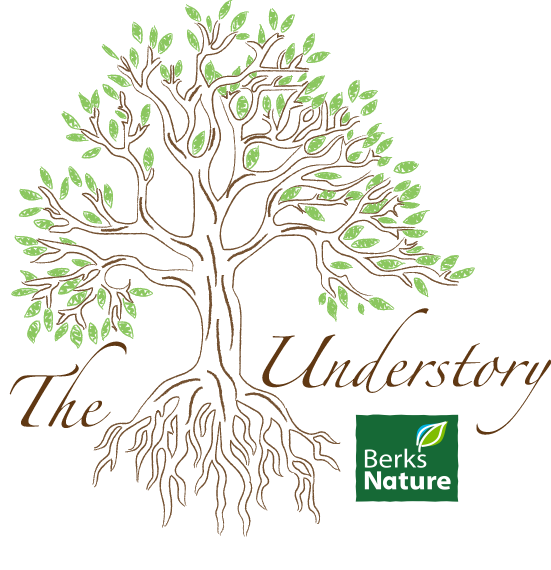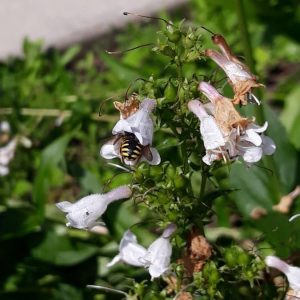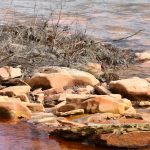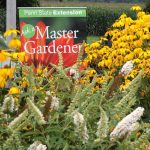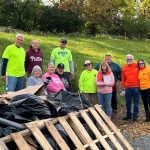The Understory is a series where we take a deeper dive into our 25 State of the Environment in Berks County indicators.
Indicator: Protected Land, Tree Cover, “Green Certified” Construction
Petals of Proposal

As much as we may delight in the aesthetics of these seasonal displays, flowers bloom not to satisfy our senses, but to survive.
Like any other organism, the ultimate goal of flowering plants is to produce offspring. Plants can package their genetic material into seeds, but this requires pollination: the transfer of pollen between two flowers of the same species, or within a single flower (if they possess the anatomy for self-pollination).
How is a sedentary plant expected to share or receive pollen?
Fortunately, there are mobile members of the natural community willing (or at least capable) of ferrying pollen from flower to flower. These pollen transporters are known as pollinators, and about 75% of all flowering plants rely on these animals for pollination and, consequently, seed production.
Flowers seeking a pollinator’s services have learned to offer incentives – pollinators don’t work for free you know!
Nectar, an energy-packed treat rich in amino acids and sugars, is often offered as payment. In the pursuit of nectar, insect pollinators come in contact with the flower’s pollen. The pollen sticks to the insect’s body who then inadvertently delivers this pollen to the next flower it visits.
Flowers bloom to invite insects into these interactions.
When ready, flowering plants unfurl their petals of proposal, whose arrangement, color, and even hidden UV patterns are all designed to communicate one thing: dinner’s served!
Discerning flowers often design their petal displays to signal only specific pollinators to their nectar meal. By catering to one or a small group of pollinators, flowers increase their pollination prospects, as those insects are more likely to visit and deposit pollen at another flower of the same species.
Bees, for example, favor the colors blue and yellow and can perceive ultraviolet light. Flowers hoping to attract bees then grow yellow and blue blossoms featuring “nectar guides” – patterns only visible in the ultraviolet spectrum that direct bees toward the center of the flower where its nectar, and pollen, await.
Flowers with moth pollinators tend to bloom at night, when moths are most active, and often produce a fragrant perfume as moths are exceptional smellers. Flies too pollinate flowers but are attracted to more odious odors. The blossoms of our native paw paw tree emit a fetid aroma, resembling rotting carrion, to attract pollinating flies.
With enough time and pressure, relationships between flowers and their pollinators can crystallize into highly specialized mutualisms. Like a braided cord, the fates of these flowers and insects grow inextricably intertwined. Should one thread break, the rope will unravel; one cannot exist without the other.
Human threads too are interlaced within these delicately braided cords.
The Need for Bees
According to the U.S. Department of Agriculture, pollinators are responsible for every three bites of food we eat, and of those honey bees contribute the lion’s share of pollination services, supporting about $20 billion worth of crop production in the U.S. annually.
To confide so much of our food security in one pollinator is a risky gamble. Our managed honey bee populations face a cacophony of threats including parasitic mites, viral pathogens, habitat loss, nutritional deficiencies from decreasing crop diversity, and insecticide poisoning. Domesticated honey bee colonies are crumbling under this barrage of stressors.
Since 2006, overwinter losses in managed honey bee colonies across the United States has averaged around 29% – that’s nearly double the historical rate of loss. In Pennsylvania beekeepers reported a staggering 52% colony loss over the winter of 2016-2017.
While the honey bee is a household name here in the United States, this premier pollinator isn’t native. Around here, they’re known as European honey bees; introduced in 1622 presumably to pollinate the European seeds and saplings brought from overseas to make the New World more palatable for settlers.
But long before the first Europeans arrived on North America’s shores, wildflowers and tree blossoms alike still bloomed, not for honey bees, but for a naturally occurring cast of buzzing, fluttering pollinators.
These native pollinators can be efficient, even superior pollinators for many crop systems.
For example, in a study of 600 fields in 41 cropping systems, wild insect visitation increased the proportion of a plant’s flowers that developed into mature fruits twice as much compared to honey bees, suggesting that wild insects provided a higher quality pollination service for these farmers.
In Pennsylvania, which is home to one of the most diverse and pollinator-dependent agricultural economies in the United States, an astounding 235 unique bee species were identified in Adams County orchards alone. More than 50 of these species collectively pollinate these orchards so efficiently that most growers do not require the expensive pollination assistance provided by commercial honey bees.
Unfortunately, the braided cords of our intricately balanced ecosystem are fraying.
Habitat loss, degradation, and fragmentation are disrupting natural community interactions between plants and pollinators. Across the United States, wild bees declined by approximately 23% between 2008 and 2013. In Pennsylvania, 51 species of butterflies, 111 species of moths, and 3 species of bumble bees are considered at risk.
Pollinator Paradise at The Nature Place
Wild pollinators play a vital role in maintaining both our natural and agricultural ecosystems, which in turn support critical ecosystem services, filtering our air and water, preventing erosion, sequestering carbon dioxide, and supplying food.
For pollinators to participate in this network of ecosystem services, they require in-tact landscapes equipped with appropriate nesting sites, abundant food resources, and minimal exposure to stressors like pesticides.
The Nature Place at Angelica Creek Park is a living demonstration of what a healthy, pollinator-friendly landscape looks like. Strolling through the campus, you will find real and practical examples of land management techniques that support the natural rhythm of nature.
Take your time walking the perimeter of The Nature Place education building to admire the colorful and varied landscaping of Berks Nature’s rain garden, wildflower meadow, and garden beds. These dazzling displays only feature plants native to Pennsylvania.
Native flowers are not only more resilient, having adapted to the regional climate and conditions, but are part of the local ecology, with familiar functions and established relationships within the wild community of flora and fauna.
As such, butterflies, bees, and flies delight to flit, flutter, and buzz amidst the yellow and purple hues of our native blooms. You can join the pollinators and other local wildlife in reveling the blossoming splendor from spring through fall; the plants growing here were selected to bloom in succession through the entire growing season to support the broadest community of pollinators.
You see, our native assemblage of wild pollinators is a diverse and particular bunch. They vary in the time of year or even time of day when they are most active, the type of flowers they can access or are attracted to, and their nutritional and reproductive needs. Only a strategically diverse collection of flowering plants can successfully appeal to these eclectic tastes.
Some flowers, like the nettle or milkweed plants, were selected with specific pollinators in mind, in this case, the red admiral and monarch butterflies, respectively. The young caterpillars of these two butterflies feed exclusively on these plants, providing critical nursery habitat.
Other times, one plant can serve multiple functions, such as the red-osier dogwood shrub thriving in the soggy soils along Angelica Creek. The red-osier dogwood’s flat clusters of white blossoms provide nourishing nectar to bumblebees, flies, and butterflies. Once pollinated, bluish-white berries attract hungry birds such as American robins, bluebirds, and cedar waxwings. Flowers and fruits aside, thickets of woody dogwood shrubs provide shelter for birds and bugs alike.
A keen eye will notice other subtle but very intentional efforts to provide shelter for native pollinators at The Nature Place. The dirt piles, mulch mounds, and fallen logs you see are not signs of negligence! Rather, these features provide valuable nesting habitat for wild bees, who excavate tunnels in loose soil or soft wood. Reduced mowing further mimics nature’s intention by allowing native plants to flourish alongside natural bee shelters.
Together, this management provides our bees with convenient housing and an enviable commute to local amenities!
After an inspiring walk through The Nature Place, it’s time to turn your own yard into a pollinator’s paradise!
- Plant your garden with native flowers that provide a continuous succession of flowering blooms from spring through fall.
- Think about providing a suite of needs from food to shelter – what flowers can you plant that produce nectar for adults plus forage for insect larvae, like caterpillars?
- Don’t like the look of logs? No problem! Make or purchase a bee house! Look for small houses made with breathable materials and learn how easy it is to maintain happy, healthy bee homes.
- Avoid pesticides but if needed to control disruptive invasive species, choose the most selective and least toxic chemicals you can. Make sure you follow the directions and consider applying pesticides in the evening to avoid daytime pollinators!
- If you have a yard that’s difficult to mow, consider giving it over to nature! But before restoring your yard into a meadow, check with your municipality’s zoning ordinances. While many townships encourage incorporating native plants and shrubs into your landscaping and gardening, municipalities sometimes regulate weeds, lawns, and meadows. Reach out to your township or Environmental Advisory Council to join the conversation!
Want to make it official? Check out Penn State’s Master Gardener Pollinator Garden Certification program (https://ento.psu.edu/pollinators/public-outreach/cert). The website is full of additional resources to learn more and get you started.
Sources:
